|
|
Ottorino Respighi (Composer) |
|
Born: July 9, 1879 - Bologna, Italy
Died: April 18, 1936 - Rome, Italy |
|
Ottorino Respighi was an Italian composer, musicologist and violinist. He is perhaps best known for his Roman trilogy and the three suites of Ancient Airs and Dances. |
|
Life |
|
Ottorino Respighi was born in Bologna, where his father was a piano teacher, and taught his son violin and piano. He continued studying violin with Federico Sarti at the Liceo Musicale in Bologna, and composition with Giuseppe Martucci and the early music scholar Luigi Torchi. In 1900, Respighi studied composition for five months with Nikolai Rimsky-Korsakov in Russia, while he was employed as first violinist in the orchestra of the Russian Imperial Theatre in St Petersburg during its season of Italian opera. He also had composition lessons with Max Bruch in 1902 in Berlin. Until 1908 his principal activity was as first violin in the Mugellini Quintet, before turning his attention entirely to composition.
Ottorino Respighi lived in Rome from 1913 for the rest of his life, after being appointed a teacher of composition at the Conservatorio di Santa Cecilia there. From 1923 to 1926 he was director of the Conservatorio. In 1925 he collaborated with Luciani on an elementary textbook entitled Orpheus.
Ottorino Respighi maintained an uneasy relationship with Mussolini's Fascist Party during his later years, vouching for more outspoken critics such as Arturo Toscanini which allowed them to work on under the regime.[1] Feste Romane, the third part of his Roman trilogy, has been seen by many as a response to the regime's demands to glorify Italy under the Fascists. However as with much of the work of Dmitri Shostakovich, the 'celebration' is ambiguous, if not satirical.
Ottorino Respighi was also a musicologist, a devoted scholar of Italian music of the 16th-18th centuries. He published editions of the music of Claudio Monteverdi and Antonio Vivaldi, and of Benedetto Marcello's Didone. Because of his devotion to these older sources (which worked its way to many of his compositions), many would start to consider him as a typical exponent of Neo-classicism (while Neo-Renaissance or Neo-Baroque would probably be more accurate to describe most of his compositions based on older work). In fact, different from the style of most neo-classicist compositions, Respighi kept more or less clear from the musical idiom of the classical period: he rather combined pre-classical musical forms (like dance suites) with a typical 19th century romantic idiom (e.g. the musical idiom associated with symphonic poems in the romantic period).
Ottorino Respighi died in his Roman villa named "I Pini". A year after his burial, his remains were moved to his birthplace Bologna and reinterred at the city's expense.
His wife, Elsa Respighi, (neé Olivieri-Sangiacomo) (1894-1996) was his former pupil. A singer (mezzo-soprano) and composer herself, Elsa Respighi created ballets of Respighi's Ancient Airs and Dances Suites and completed his final opera Lucrezia in 1937. Throughout her long life she championed her husband's work unfailingly. She published a biography of Respighi in 1962. In 1969 she established Fondo Respighi in Venice, to promote music education in Italy. She was also at the forefront of the 1979 Respighi Centenary celebrations, which saw a number of long-neglected works performed and recorded for the first time. Since then, several of her own works, chiefly for solo accompanied voice, have been given their premiere. In 1955 Elsa Respighi produced a memoir of her encounters with some of the most influential cultural figures of the early 20th century. |
|
Works |
|
Respighi's compositions include:
Piano Concerto in the Mixolydian Mode (1925)
His most known symphonic poems (most of them symphonic poem suites), which now belong to the standard orchestral repertoire:
o Pini di Roma (Pines of Rome) (1923-1924)
o Fontane di Roma (Fountains of Rome) (1915-1916)
o Feste Romane (Roman Festivals) (1928)
o Brazilian Impressions (1928)
His operas, from the early Semirâma to the late Lucrezia, on the other hand, are hardly ever played or recorded nowadays.
His most popular works involving older sources:
o The Ancient Airs and Dances Suite No. 1 of 1917 is an orchestral piece based on Renaissance lute pieces by Simone Molinaro, Vincenzo Galilei (father of Galileo Galilei), and additional anonymous composers.
o In 1918 Sergei Diaghilev commissioned a ballet from Respighi, who then wrote La Boutique Fantasque, which borrows tunes from the 19th century composer Rossini. This had its premiere in London on 5 June 1919.
o Respighi's Ancient Airs and Dances Suite No. 2 of 1924 is based on pieces for lute, archlute, and viol by Fabrizio Caroso, Jean-Baptiste Besard, Bernardo Gianoncelli, and an anonymous composer, plus Antoine Boësset's famous song "Divine Amaryllis". It also interpolates an aria attributed to Marin Mersenne.
o Following the success of this suite, Respighi wrote Gli Uccelli ("The birds") in 1927, based on Baroque pieces imitating birds.
o Then in 1932, he wrote Ancient Airs and Dances Suite No. 3, which differs from the previous two suites in being arranged for strings only and somewhat melancholy in overall mood. It is based on lute songs by Besard, a piece for baroque guitar by Lodovico Roncalli, and lute pieces by Santino Garsi da Parma and additional anonymous composers. |
|
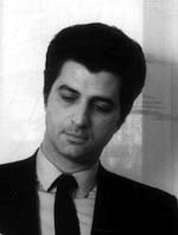

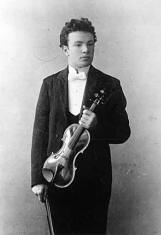
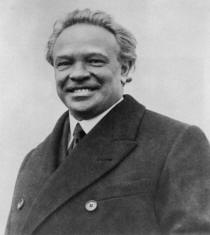

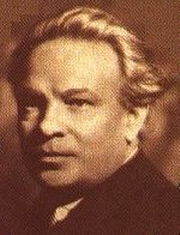

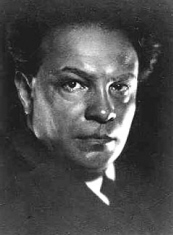



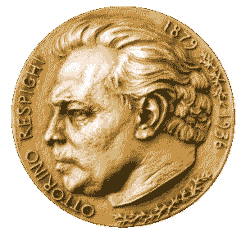
|
|
Source: Wikipdia Website
Contributed by Aryeh Oron (May 2006) |
|
Ottorino Respighi : Short Biography | Arrangements/Transcriptions: Works | Recordings of Works for Orchestra |
|
Other Arrangements of J.S. Bach's Works |
|
Title |
Chorale Melody |
Year |
|
Arrangement: Bach's chorale Num komm der Heiden Heiland, for violin, cellos & basses, P. 118 |
Nun komm, der Heiden Heiland |
1918 |
|
|